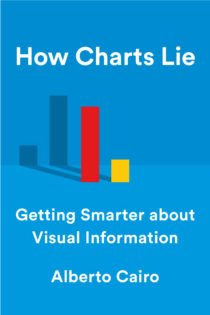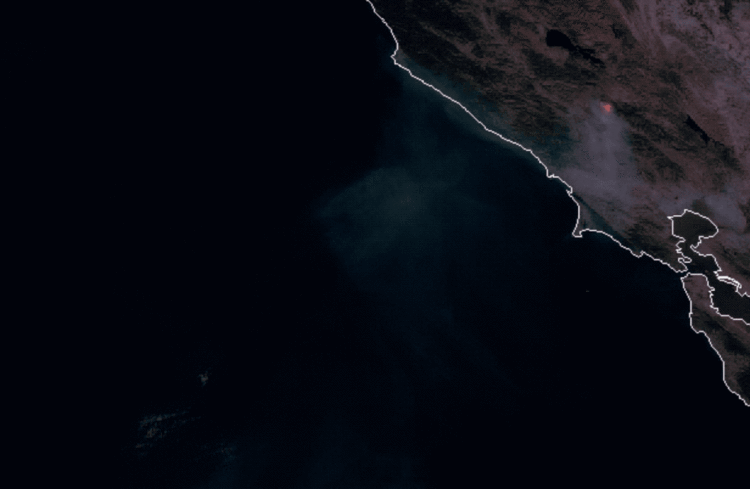Randall Munroe of xkcd was on the Data Stories podcast. He talks about his work, his process, and communicating complex ideas to a wide audience. It’s amazing how much of his process overlaps with visualizing data.
-
Interested in reviews on the Sephora website for waterproof makeup, Connie Ye figured she might as well scrape all of the reviews and filter for the ones that mention crying:
I ended up scraping about ~5k reviews, and 105 of them mentioned crying, sobbing or tears, giving a ratio of about 1/50. This is of course a biased number because the products the reviews are for are meant to withstand water, but I was still surprised to find so many. I was also surprised by how confessional and emotional people were willing to be in their reviews; I saw stories about breakups, death of loved ones, weddings, fights and more. However, despite the tragedy underlying many of the stories, the tone was often strangely positive, providing exuberant praise for the product that allowed them to maintain their makeup throughout the tragedy.
I have no idea what I would do with this dataset, but I feel like someone can figure out a worthwhile use.
You can also browse through the reviews using Ye’s straightforward viewer.
-
Stephen M. Stigler argues that data have a limited shelf life. The abstract:
Data, unlike some wines, do not improve with age. The contrary view, that data are immortal, a view that may underlie the often-observed tendency to recycle old examples in texts and presentations, is illustrated with three classical examples and rebutted by further examination. Some general lessons for data science are noted, as well as some history of statistical worries about the effect of data selection on induction and related themes in recent histories of science.
In a nutshell, while data itself doesn’t change, everything around it — the people who collected the data, the things that the data is about, and where the data came from — changes over time.
-
In a follow-up to a map from a few years back, Andy Woodruff provides a gripe assistant tool for Daylight Saving Time. Plug in your preferences for an ideal day, and you can see if you’re in the right or in the wrong for complaining.
Obviously if you have kids, the whole map is automatically yellow.
-
I always enjoy me some scale of space graphics. Neal Agarwal made an interactive browser that starts at astronaut scale and quickly zooms you out to larger objects with a fisheye view.
See also: if the moon were a pixel, planets from various perspectives, a scaled physical model of the solar system, and the really slow speed of light.
-
Laughter online is full of nuances. A capitalization of some letters or a single space can change the meaning completely. Good thing The Pudding is examining the subject.
-
Members Only
-
ProPublica, with The Advocate and The Times-Picayune, estimated chemical concentrations in a highly polluted area along the Mississippi River that will probably get worse soon:
The industrial stretch of the Mississippi River between Baton Rouge and New Orleans, a region known as “Cancer Alley,” is one of the most highly polluted areas in the country. A ProPublica analysis using a scientific model developed by the Environmental Protection Agency shows that some of the neighborhoods where new plants are being built already have very high concentrations of toxic chemicals. But Louisiana continues to approve the building of these new plants and the expansion of existing ones.
Yikes.
-
It was reported that 1 in 6 millennials have at least $100,000 saved. Is this right? It seems high. I looked at the data to find out and then at all of the age groups.
-
This month PG&E has been shutting down power to thousands of households in northern California because of high winds and wildfire risk. A lot of electrical equipment in the area is dated and in need of a repair. The Wall Street Journal mapped fire risk and bad circuits together.
-
I feel like satellite imagery has upped its skillset in recent years. According to Rob Simmon, the image below from Planet of the Kincade fire in Sonoma, California was taken from 600 miles away in Utah.
Planet SkySat imagery of the #KincadeFire captured at an extreme angle yesterday, October 27th. pic.twitter.com/WQd7RKsM81
— Planet (@planetlabs) October 28, 2019
-
You can see the time-lapsed imagery with this browser. [via @weatherdak]
-
For The Atlantic, Ian Bogost on communicating complex ideas to an audience:
One thing you learn when writing for an audience outside your expertise is that, contrary to the assumption that people might prefer the easiest answers, they are all thoughtful and curious about topics of every kind. After all, people have areas in their own lives in which they are the experts. Everyone is capable of deep understanding.
Up to a point, though: People are also busy, and they need you to help them understand why they should care. Doing that work—showing someone why a topic you know a lot about is interesting and important—is not “dumb”; it’s smart. Especially if, in the next breath, you’re also intoning about how important that knowledge is, as academics sometimes do. If information is vital to human flourishing but withheld by experts, then those experts are either overestimating its importance or hoarding it.
I struggled with this during my first year of graduate school, because it took a while to get out of my own head and imagine myself as a reader. Or, in the case of that first-year regression analysis course, I was supposed to imagine a policymaker on a tight schedule.
I would crunch numbers or whatever and write reports. My professor told me I had to do a better job explaining the meaning behind the numbers. How should a non-statistician interpret these results? It was my job as the statistician to explain.
-
 Charts can reveal truths that we never would see otherwise, but they can also be misused to show us something in the data that doesn’t reflect reality. Alberto Cairo’s new book How Charts Lie is a guide on how to better spot the latter. It’s about reading charts more critically and understanding data better, which are necessary skills for everyone these days.
Charts can reveal truths that we never would see otherwise, but they can also be misused to show us something in the data that doesn’t reflect reality. Alberto Cairo’s new book How Charts Lie is a guide on how to better spot the latter. It’s about reading charts more critically and understanding data better, which are necessary skills for everyone these days.I’m putting this at the top of my queue.
-
Marion Rouayroux, a graphic designer and a big fan of the show Friends, collated a bunch of data about the sitcom. Then she visualized the data with a series of information graphics.
-
How to Use IPUMS Extraction Tools to Download Survey Data
Almost all of my visualization projects that use data from the Census Bureau comes via IPUMS. In this guide, I provide five steps to getting the data you need using their tools.
-
Members Only
-
For Datawrapper, Lisa Charlotte Rost outlines the steps to prepare and clean your data in Excel or Google Spreadsheets. From the beginning:
When you download an Excel file, it often has multiple sheets. Our data set has three of them, as seen on the bottom: “Data”, “Metadata – Countries” and “Metadata – Indicators”. Look through all of your sheets and make sure you understand what you’re seeing there. Do the headers, file name and/or data itself indicates that you downloaded the right file? Are there footnotes? What do they tell you? Maybe that you’re dealing with lots of estimates? (Does that maybe mean that you need to look for other data?) If you don’t find notes in the data, make sure you look for them on the website of your source.
The guide is in the context of prepping your data to load into the Datawrapper tool, but the advice easily applies more generally.
-
Overview is an ongoing project that uses a zoomed out view for a new perspective on the world:
Seeing the Earth from a great distance has been proven to stimulate awe, increase desire to collaborate, and foster long-term thinking. We aim to inspire these feelings — commonly referred to as the Overview Effect — through our imagery, products, and collaborations. By embracing the perspective that comes from this vantage point, we believe we can stimulate a new awareness that will lead to a better future for our one and only home.
Far away enough to see patterns. Close enough to stay connected to the parts.
-
For commuters, the farther away you live from the workplace, the earlier you have to leave your house to get to work on time. How much does that start time change the farther out you get?
















 Visualize This: The FlowingData Guide to Design, Visualization, and Statistics (2nd Edition)
Visualize This: The FlowingData Guide to Design, Visualization, and Statistics (2nd Edition)










